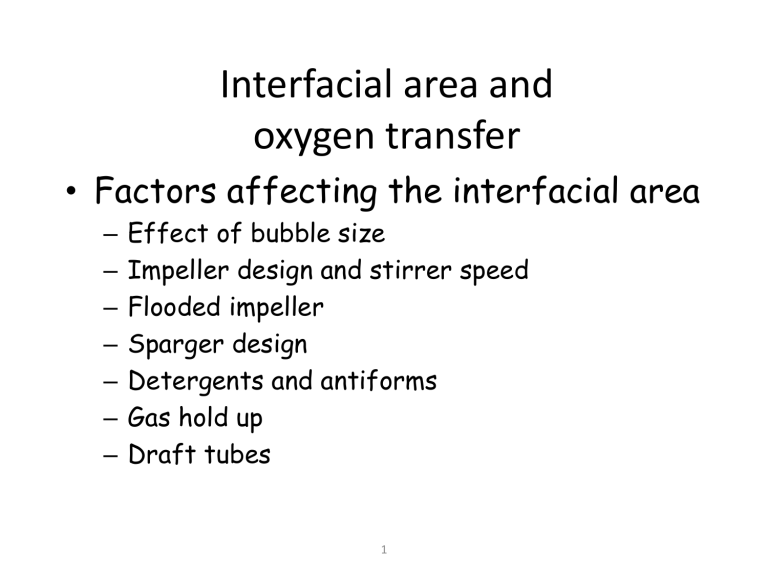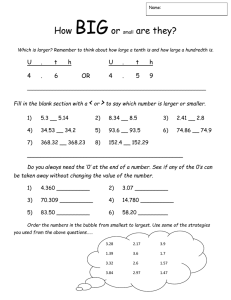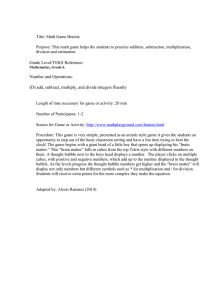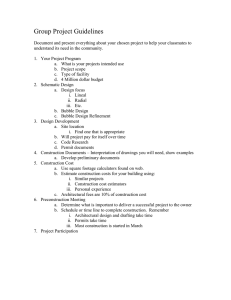Interfacial area and oxygen transfer Factors affecting the interfacial area •
advertisement

Interfacial area and oxygen transfer • Factors affecting the interfacial area – – – – – – – Effect of bubble size Impeller design and stirrer speed Flooded impeller Sparger design Detergents and antiforms Gas hold up Draft tubes 1 Factors affecting the interfacial area • Increasing the interfacial area – increases the value of kLa – increases the oxygen transfer rate • The interfacial area is determined by the – aeration rate – bubble diameter 2 Effect of bubble size • bubble size plays a major role in determining the total interfacial area. • The smaller the bubble size the larger the interfacial area. • But, an average bubble size which is too small can have detrimental effects on the oxygen transfer rate. 3 • Bubble or globule size is determined by the – presence of surface active agents such as antifoams and oils (This is covered more in detail in the next chapter) – characterics of the agitation system 4 • Another mechanism is to decrease the size of the globule or bubble. The smaller the object is its larger surface area to volume ratio. 5 6 Impeller design and stirrer speed • Impellers designed for the maximization of oxygen transfer rates typically produce high shear conditions. • The high shear conditions are used to reduce the bubble size. 7 8 • One such impeller is the Rushton turbine. 9 • Shear rates increase with the stirrer speed or the impeller tip speed 10







